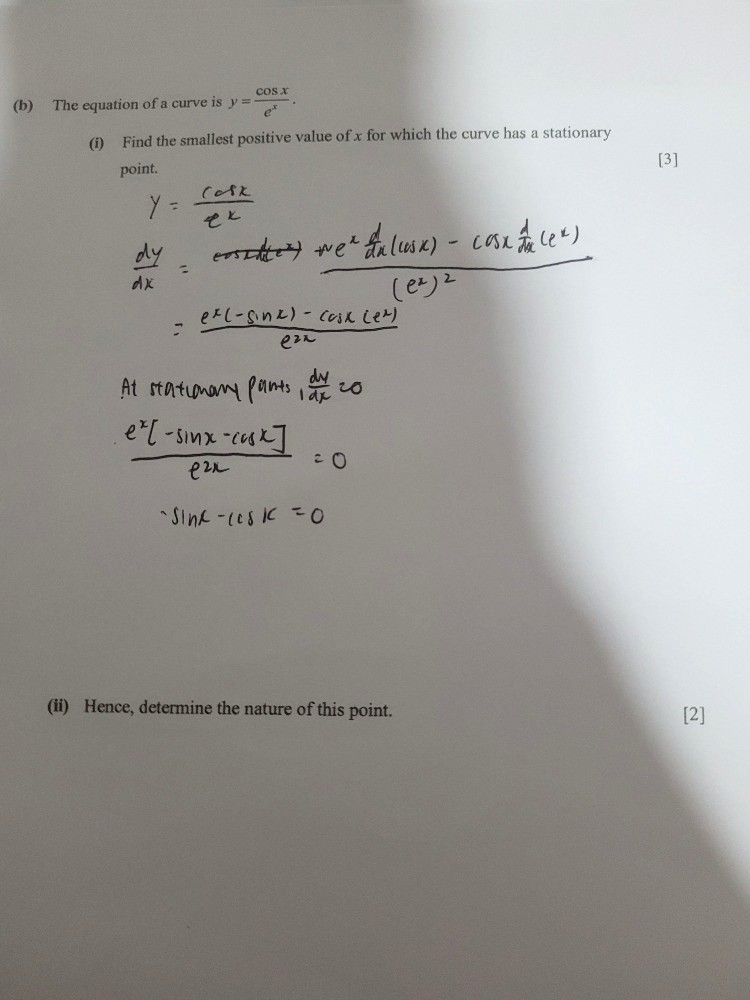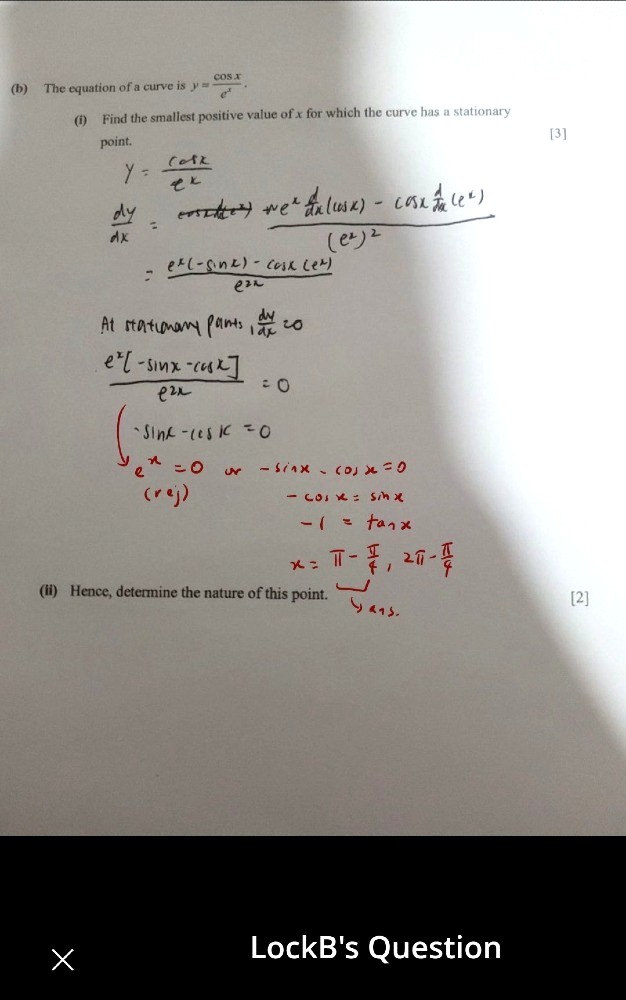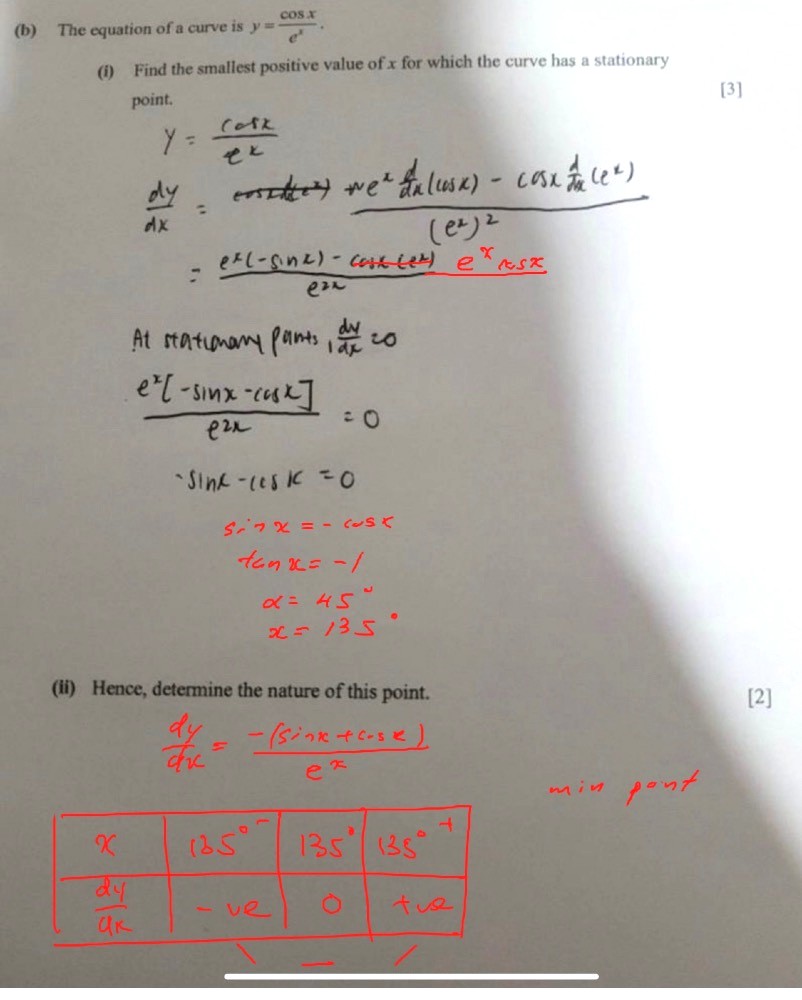Ask Singapore Homework?
Upload a photo of a Singapore homework and someone will email you the solution for free.

Question
secondary 4 | A Maths
2 Answers Below
Anyone can contribute an answer, even non-tutors.

i dont know how to continue from here and i think i did it wrongly...
You just need to continue.
-sinx-cosx=0?
-sinx=0 or -cosx=0
but with the negative sign infront of sinx and cosx, i dont really know how to proceed...
sin x = -cos x
sin x / cos x = -1
tan x = -1
This should be familiar. It's a special angle. tan(π/4) = 1 but that's for first and third quadrant.
We need to look at the second and fourth quadrant for tan x = -1
Since they want positive values of x,
x = 180° - 45°, 360° - 45°, 180° - 45° + 360°, 360° - 45° + 360°,...
x = 135°, 315°, 495°, 675°
Or
x = π - π/4, 2π - π/4, π - π/4 + 2π, 2π - π/4 + 2π,...
x = 3π/4, 7π/4, 11π/4, 15π/4,...
Smallest positive value of x for which there is a stationary point
= 135° or 3π/4 radians
i.e it's -sin x - cos x = 0
NOT
-sin x (- cos x) = 0
sin x cos x = 0
Your dy/dx expression can be simplified into :
-(sin x + cos x) / e^x
We know that e^x is positive for all real x so we just need to check the sign of -(sin x + cos x) to the left and right of x = 3π/4 rad (or 135°)
(First derivative test)
We can just look at the isosceles right-angled triangle obtained when x = 3π/4 rad (it is the second quadrant)
Here, tan x = -1 so the opposite and adjacent side have the same absolute length, just that the coordinates for the adjacent are negative.
sin x = - cos x here since :
sin x = opp/hyp = -adj/hyp = -cos x
①
Now just increasing the angle by a little bit causes the adjacent to lengthen by a bit, while the opposite gets a little bit shorter (while keeping the hypotenuse fixed)
sin x decreases by a little (becomes less positive , cos x becomes more negative (since the adjacent is more negative now)
so sin x + cos x < 0
-(sin x + cos x) > 0
dy/dx > 0
② the opposite occurs when we decrease the angle a bit. Adjacent gets shorter, opposite side gets longer (while keeping the hypotenuse fixed)
sin x + cos x > 0
-(sin x + cos x) < 0
dy/dx < 0
So we can see this is a minimum point.
-5 - 4 = -9
-5 + 3 = -3
The -5 in this case should be thought of as (0 - 5) if needed.
If multiplication is needed then brackets will be placed
(-5) × (-4) or (-5)(-4)
-5 × -4 (not recommended as two operators should not be next to each other without brackets)
See 2 Answers







